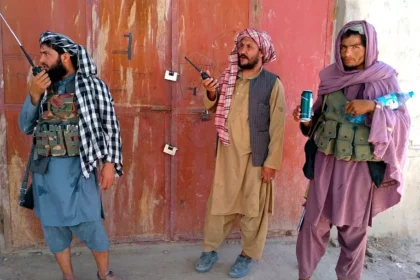RASC News Agency: International relief organizations have voiced deep concern over the mounting humanitarian toll from the powerful earthquake that struck northern Afghanistan early Monday morning, November 3, shaking the provinces of Balkh and Samangan and leaving widespread devastation in its wake.
According to preliminary figures released by the United Nations Children’s Fund (UNICEF) on Tuesday, at least 20 people have been confirmed dead and 945 others injured. The 6.3-magnitude earthquake, which struck the Khulm district of Balkh Province, was felt across several regions, including the capital Kabul. Early assessments indicate that nine fatalities occurred in Balkh and eleven in Samangan.
UNICEF warned that more than 11,000 people were exposed to very strong tremors, while over 1.5 million others experienced intense shaking figures that suggest the death toll may rise further as rescue operations continue. The agency reported that hundreds of homes were either completely destroyed or severely damaged, leaving thousands of families without shelter.
“Countless children and families have been displaced and are in urgent need of shelter, drinking water, food, and medical assistance,” UNICEF said in a statement, adding that its emergency teams, in coordination with humanitarian partners, are conducting rapid assessments and dispatching life-saving supplies to the hardest-hit communities.
In response to the disaster, the Organization of Islamic Cooperation (OIC) expressed solidarity with the Afghanistani people and called on its member states, as well as international relief organizations, to deliver immediate and coordinated humanitarian aid to the affected areas.
OIC Secretary-General Hissein Brahim Taha stated:
“The people of Afghanistan are enduring yet another tragedy. In these difficult moments, the international community particularly Islamic nations and humanitarian partners must stand united to alleviate the suffering of the victims.”
Taha confirmed that the OIC’s representative office in Afghanistan has been instructed to work closely with national and international agencies to assess needs and expedite the delivery of assistance.
This latest disaster comes amid a string of deadly earthquakes that have struck Afghanistan over the past two years. Experts warn that decades of weak infrastructure, the collapse of institutional capacity under Taliban rule, and the absence of an effective disaster-response system have left the country acutely vulnerable to natural calamities.
Humanitarian workers say that access to quake-hit regions remains severely restricted due to damaged roads, poor communication networks, and bureaucratic barriers imposed by the Taliban authorities. Relief organizations are also grappling with severe funding shortfalls after international donors froze development assistance in response to the Taliban’s repressive governance and bans on women’s work.
“Every minute of delay deepens the suffering,” said one aid coordinator based in Mazar-e-Sharif. “The Taliban’s lack of transparency and coordination has crippled rescue efforts and cost precious lives.”
As temperatures begin to drop in northern Afghanistan, displaced families face the threat of exposure, hunger, and disease. Aid agencies have warned that without immediate intervention, the earthquake’s humanitarian impact could escalate rapidly, overwhelming already exhausted local capacities.
Analysts describe the situation as a dual tragedy one caused by nature, and another perpetuated by political failure. While the world mobilizes in compassion, Afghanistan remains trapped under a regime ill-equipped and unwilling to protect its own citizens.
“The people of Afghanistan are resilient,” UNICEF said, “but resilience is not a substitute for governance. They need support, stability, and a government that values human life over control.”






